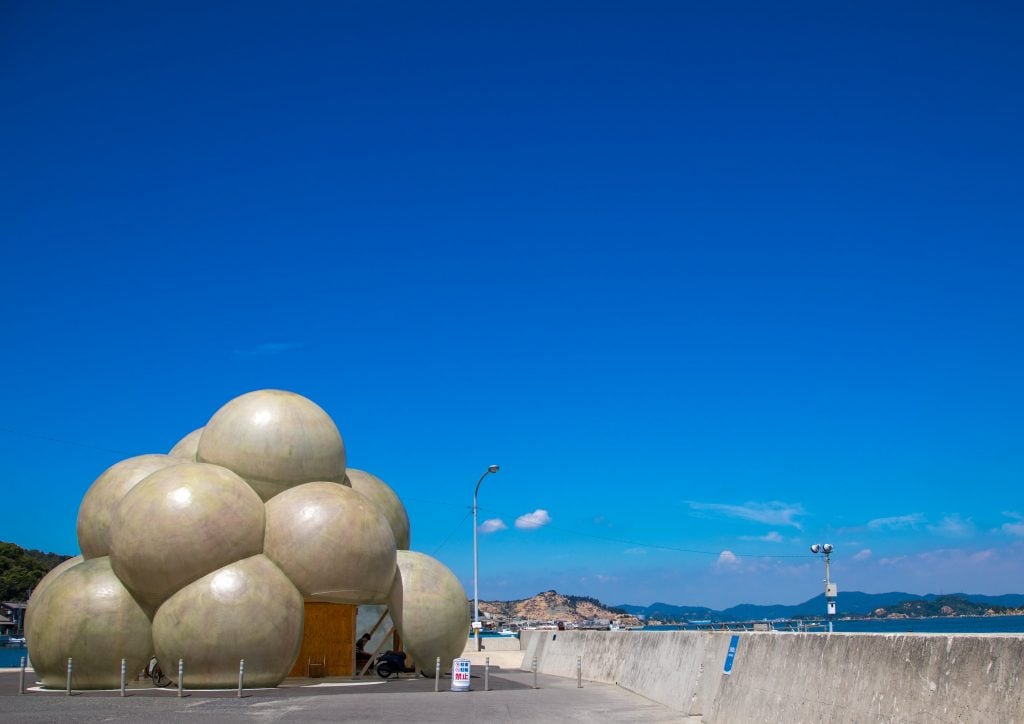
23 Dec An Art Lover’s Guide to Japan’s Island Paradise Naoshima
Source Credit: Content and images from Artnet News. Read the original article - https://news.artnet.com/art-world/art-lovers-guide-to-naoshima-2585459
Located in Japan’s Seto Inland Sea, Naoshima is part of a cluster islands that includes Teshima and Inujima, where art and nature merge. At the heart of this project is renowned architect Tadao Ando, whose minimalist concrete designs seamlessly blend with the surroundings. His multiple contributions anchor Naoshima’s artistic vision.
The islands feature works by artists such as Yayoi Kusama, James Turrell, Walter De Maria, and Claude Monet, offering a range of experiences from vibrant sculptures to contemplative installations. Alongside these permanent installations, there are also changing temporary exhibitions. Next year, the highly anticipated Setouchi Triennale will be held on these islands, bringing new art installations and performances to further transform the artistic landscape. Known for its world-class museums, minimalist architecture, tranquil scenery, and some of the most unique art installations in the world, Felipe Gonzalez Carrizosa, who works in communications at Mexico City’s Galerie Nordenhake, recently made a pilgrimage to Naoshima and reported back.

Passenger terminal shaped like a cloud in the port, Seto Inland Sea, Naoshima, Japan on August 24, 2017 in Naoshima, Japan. (Photo by Eric Lafforgue/Art In All Of Us/Corbis via Getty Images)
Getting There: Kyoto to Naoshima via Uno Port
About three hours away from Kyoto by train and bus is Uno Port. It is a very small, cute town where you can stay on a budget before taking the ferry to the islands. I stayed in this small hotel the Uno Port Inn right in front of where the ferries depart. It’s super convenient. The ferry ride to Naoshima takes just 20 minutes, offering expansive views of the Seto Inland Sea. As you approach, the island’s art installations and unique architecture come into view, building anticipation for the experiences ahead.
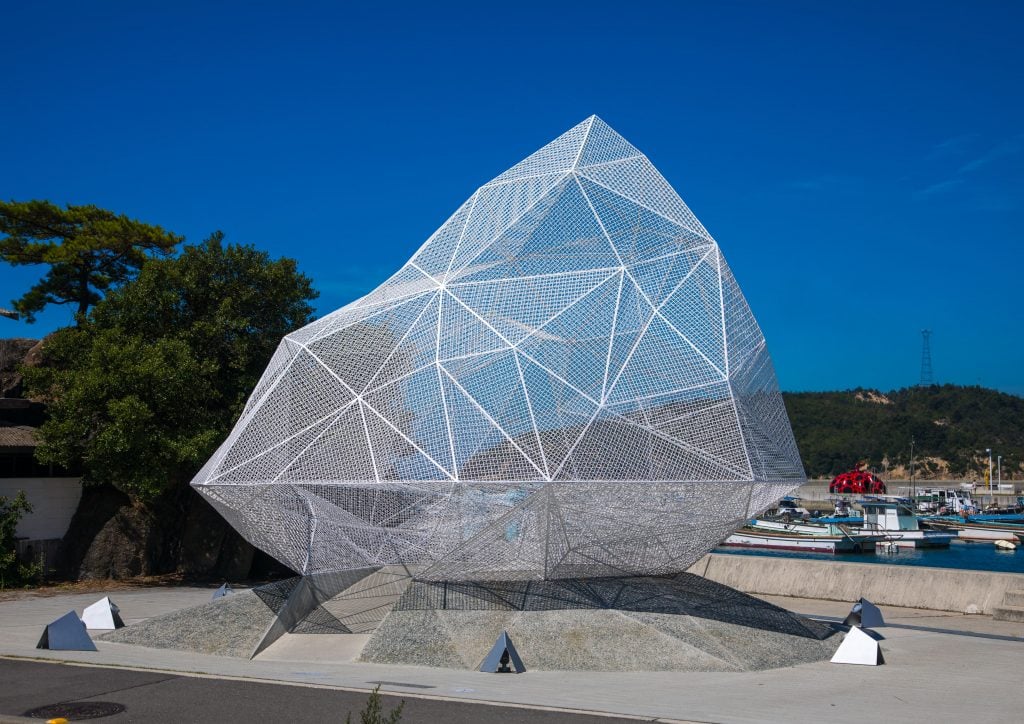
NAOSHIMA, JAPAN – AUGUST 24: Naoshima pavilion by Sou Fujimoto, Seto Inland Sea, Naoshima, Japan on August 24, 2017 in Naoshima, Japan. (Photo by Eric Lafforgue/Art In All Of Us/Corbis via Getty Images)
Day 1: Exploring Naoshima’s Big Island
The journey begins on Naoshima itself. Most people start here because it’s the most famous one. Visitors are greeted by Sou Fujimoto’s wondrous gridded iceberg, the Naoshima Pavilion, an irregular white aluminum polyhedron.
You absolutely have to rent an electric bike. The island’s terrain is hilly, and walking is almost impossible in the heat and humidity. Even in October, it’s hot and sticky. The bike paths take you along the coast, and the views are stunning. Part of the joy of being here is seeing all of the immaculate scenery and ocean views. Along the way, I spotted a massive brown eagle soaring overhead—a reminder of the island’s vibrant wildlife. The landscaping is equally meticulous, with every detail carefully maintained to enhance the natural beauty.
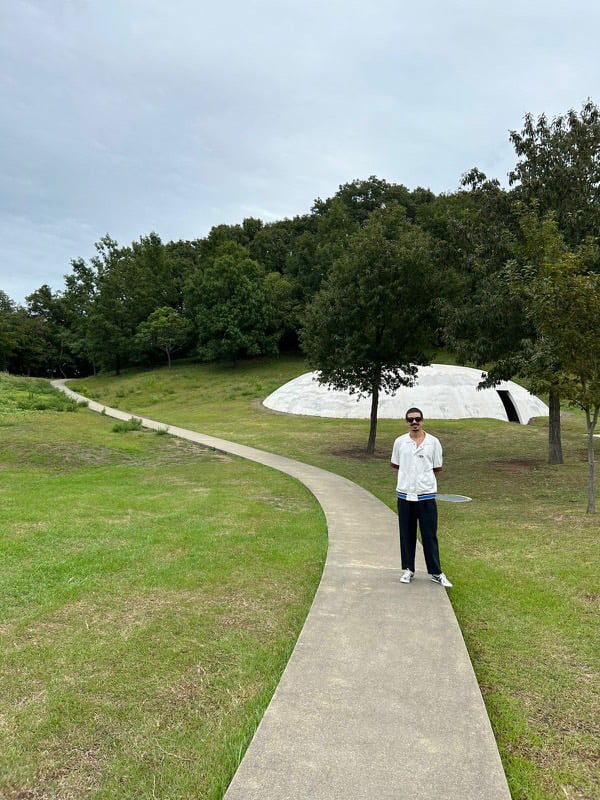
The author mid-journey to Naoshima. Courtesy of Felipe Gonzalez Carrizosa.
A jarring aspect of the experience for international travelers is the precision regimentation. You are not laconically wandering from site to site. but you have to schedule timed bookings for each place you visit, and you’re not sure how much time each stop deserves or how long it will take from point A to B so it can feel a bit like you’re rushing to appointments. But you get used to it, and the art you see makes all the planning and effort completely worthwhile.
Chichu Art Museum
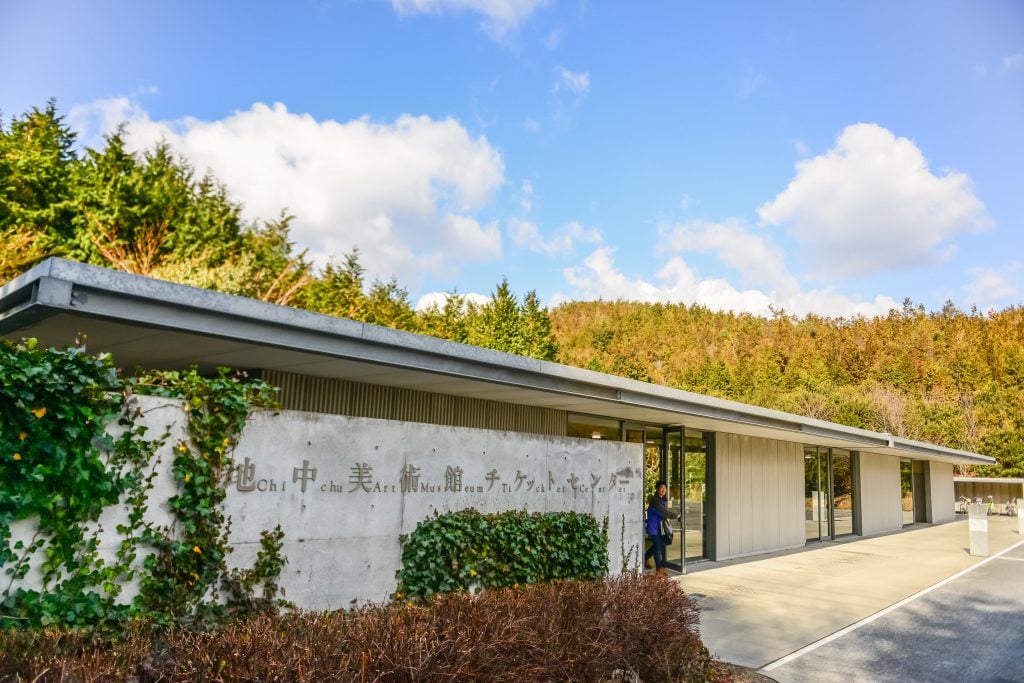
Chichu Art Museum Japan. Photo: Shutterstock
Designed by Andao, the Chichu Art Museum feels like a sacred space where architecture and art converge to emphasize reflection, light, and the passage of time. It’s mostly underground, with concrete like apertures pierced into a grass covered mound. Inside, they have Monet’s Water Lilies, a series of five paintings that are part of the museum’s permanent collection. These works are displayed in a serene, gallery where natural light flows through skylights, changing the ambiance throughout the day and enhancing the meditative quality of the space.
Alongside these, there’s Walter De Maria’s Time/Timeless/No Time, an installation featuring a striking granite sphere surrounded by geometric elements in a vast, contemplative space. There is the most amazing James Turrell installation I’ve ever seen. It’s titled Open Field (2000). One of them was a color-changing square where you could actually step inside. It starts purple, then orange, then red—it’s like being inside a sunset.
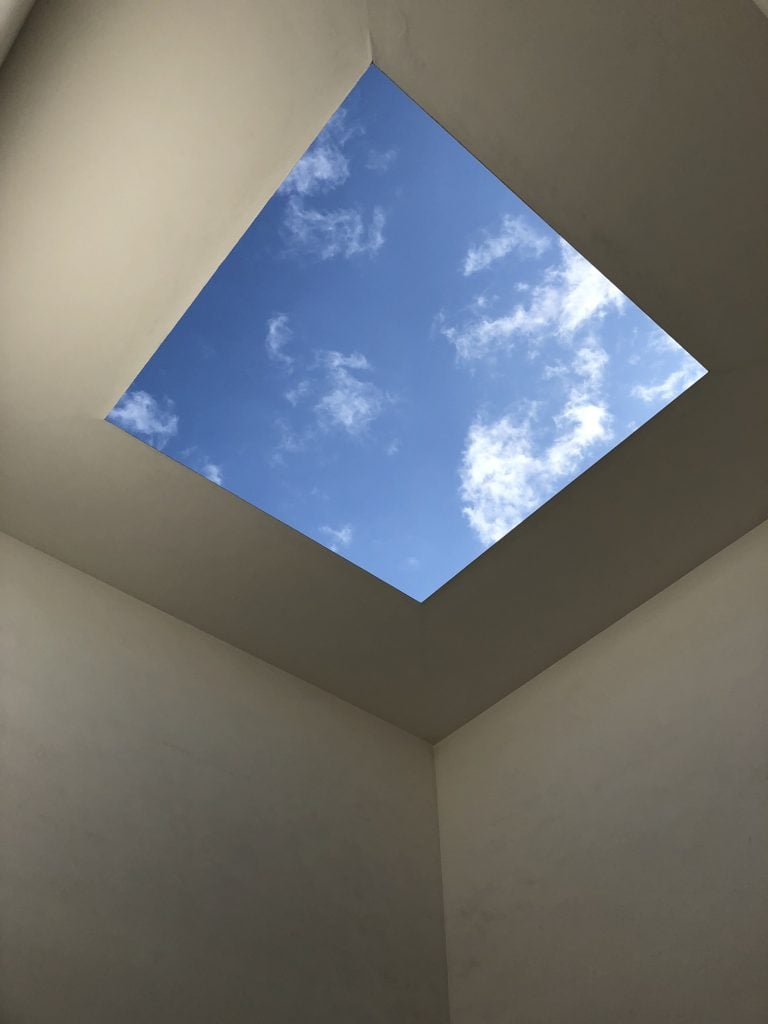
James Turrell’s Open Sky (2004) Photo: Shutterstock
Turrell’s other installation is Open Sky (2004). There’s a skylight where you can see the sky. Beautiful, but nothing really happens there. It’s all about the vibe. You’re not allowed to take pictures in most places, which is super annoying, but it really does help you focus on the art, but the Turrells were unforgettable.
Art Houses
Scattered around the island are these art houses. The Art House Project on Naoshima transforms seven traditional buildings into immersive art spaces, blending history with contemporary art in varying sizes and degrees of success. Among these are Kadoya, featuring LED counters in water by Tatsuo Miyajima; Go’o Shrine, where Hiroshi Sugimoto’s glass staircase descends into the earth; and Haisha, an eclectic house reimagined by Shinro Ohtake. Each house offers a unique perspective, connecting art with the island’s cultural heritage. Among them is Kadoya, which features a chandelier that moves with seismic activity—so you could spend an hour just watching it sway. Minamidera, a sensory experience of light and dark by James Turrell and Tadao Ando, was kind of underwhelming. I thought it’d be a big deal, but it was mostly architecture models and nothing much else. Still, the houses are worth exploring, and each one feels like its own world.
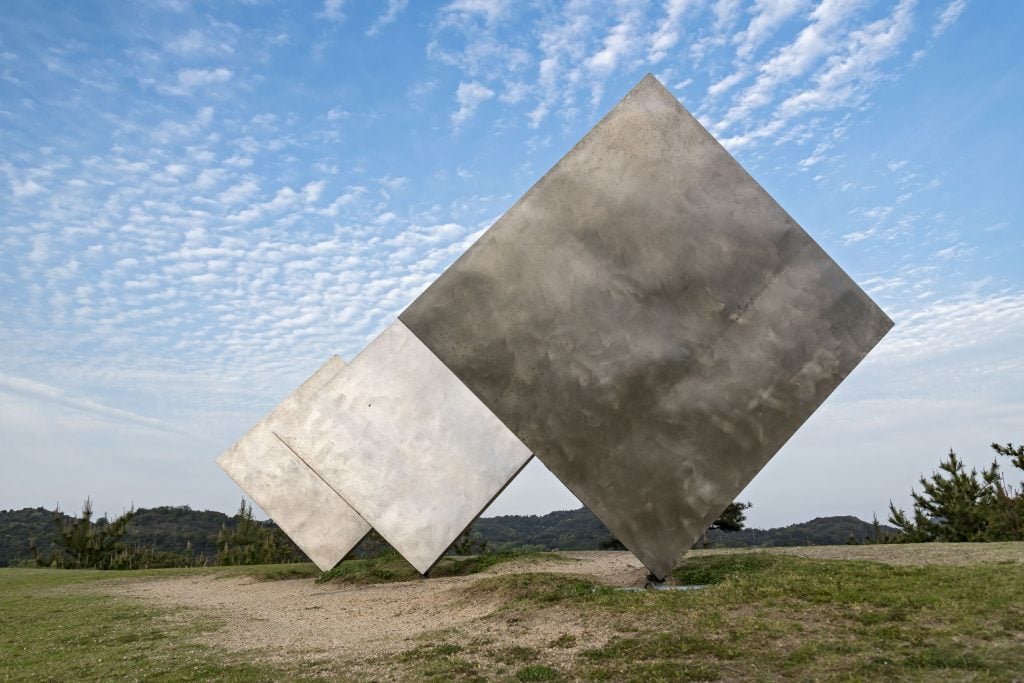
George Rickey’s ‘Three squares’ art installation in Naoshima, Japan. (Photo by: Education Images/Universal Images Group via Getty Images)
After-Hours at Uno Port: Dining and Relaxation
Uno Port isn’t just where you catch the ferry; it’s also a great spot to wind down after a day on the islands. At night, the town has this low-key vibe, with small, traditional Japanese restaurants and bars lighting up the quiet streets. One of the coolest dining experiences was picking out fresh fish right from a table at a tiny local spot. They’d cook it up as ramen or fried rice, simple and delicious. It’s the kind of place that feels unpolished in the best way—no frills, just great food and a cozy atmosphere.
Back at Uno Port, there’s also an onsen divided into men’s and women’s areas. You go in naked, and it’s amazing. The onsen features traditional stone pools, open-air baths, and beautiful views of the night sky. Inside, there are showers and saunas, making it the perfect place to unwind after a long day of biking. Some onsens in Japan don’t allow tattoos, but this one was more accommodating—you could either cover them with stickers or show your passport to explain you were a tourist. I went at night, and it was magical. Being surrounded by nature in the warm water was a highlight of the trip.
Day 2: Teshima and the Ghost Town
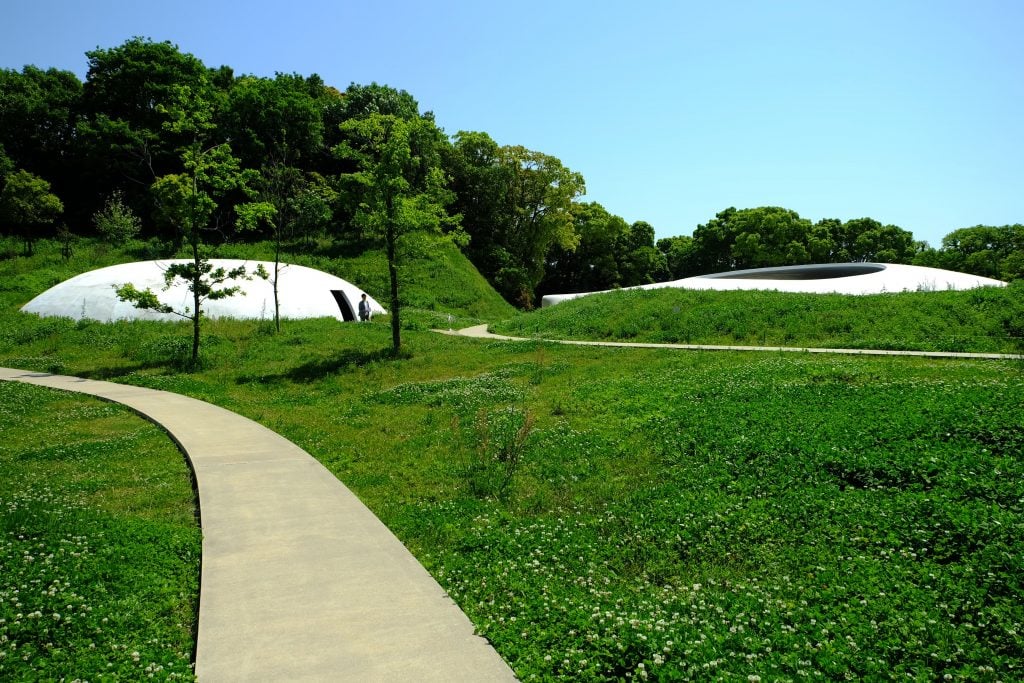
Art Setouchi Triennale on Japanese holidays/ golden week.Day scene of Teshima art museum with curve footpath at Teshima island in Seto Inland Sea. Photo: Shutterstock
The second day was dedicated to Teshima, a smaller island nearby that you take another ferry from the port to get to. Teshima has fewer visitors and feels more relaxed. I stayed in this amazing art space called the Teshima Art Museum. Designed by architect Ryue Nishizawa and artist Rei Naito and completed in 2010, the museum resembles a water droplet gently resting on the landscape. Inside, it’s almost empty, with smooth surfaces and little water droplets emerging from the floor, forming tiny streams that reflect the light. The open structure allows wind and sound to flow freely, creating a meditative connection with the surrounding nature. It’s beautiful. I spent an hour there just sitting and taking it all in. The installation Les Archives du Cœur by Christian Boltanski, where visitors can listen to recordings of heartbeats from around the world, was the most boring part of the experience. You go inside. People are dressed as doctors, and you can only hear heartbeats.
In addition to the Teshima Art Museum, the Teshima Yokoo House combines vibrant contemporary art by Tadanori Yokoo with traditional Japanese architecture. Shima Kitchen offers a communal dining space inside a a renovated old Japanese house with a modern extension, creating a harmonious balance of old and new. Local women prepare meals using fresh, seasonal ingredients, adding a deeply authentic touch to the experience. As part of its origins in the Setouchi Triennale, Shima Kitchen also features artistic installations that complement the dining experience, making it more than just a place to eat.
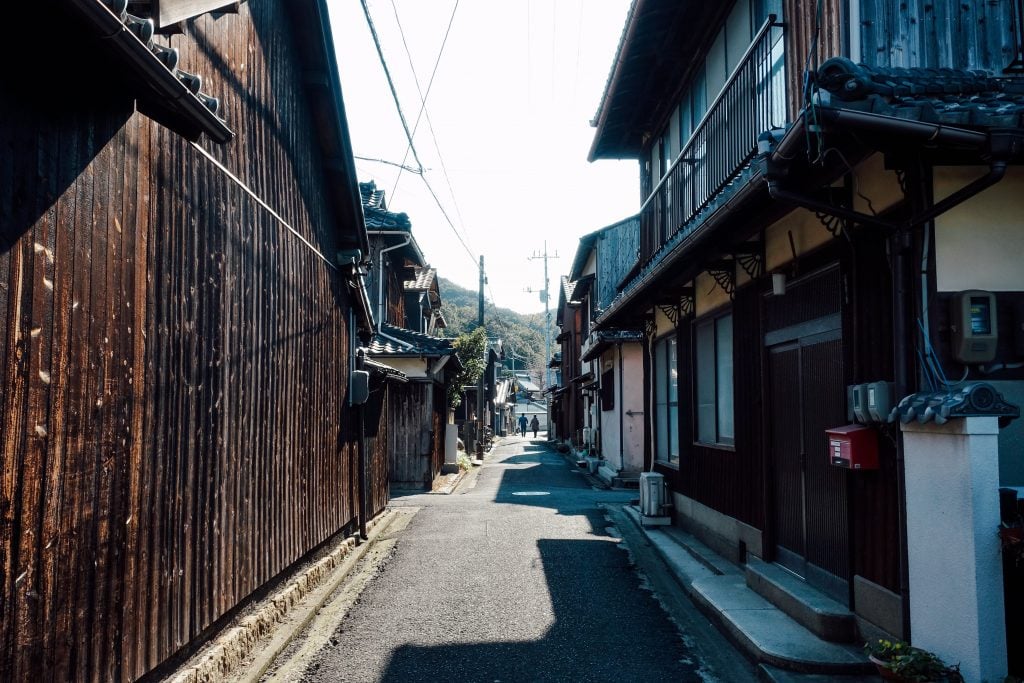
Old Town Village in Naoshima, Japan. Photo: Shutterstock.
At times, this small island also had a somewhat eerie ghost town vibe. Most of the visitors are biking around the island on the outer loop, so the middle of the island is pretty barren, and there are a lot of abandoned houses—nobody lives there. It’s eerie and fascinating. You’d think you’d see more people, but it’s mostly abandoned. You can see in them, and it’s very weird and cool.
Kusama’s Pumpkins and Benesse Art House
Of course, I had to see Yayoi Kusama’s famous pumpkins. The yellow pumpkin, located at Miyanoura Port, sits at the end of a pier overlooking the sea. Its bright polka-dot pattern and vivid yellow color stand out dramatically against the ocean backdrop, making it a favorite spot for photos. Though it was damaged during a typhoon in 2021, it has since been restored to its iconic location.
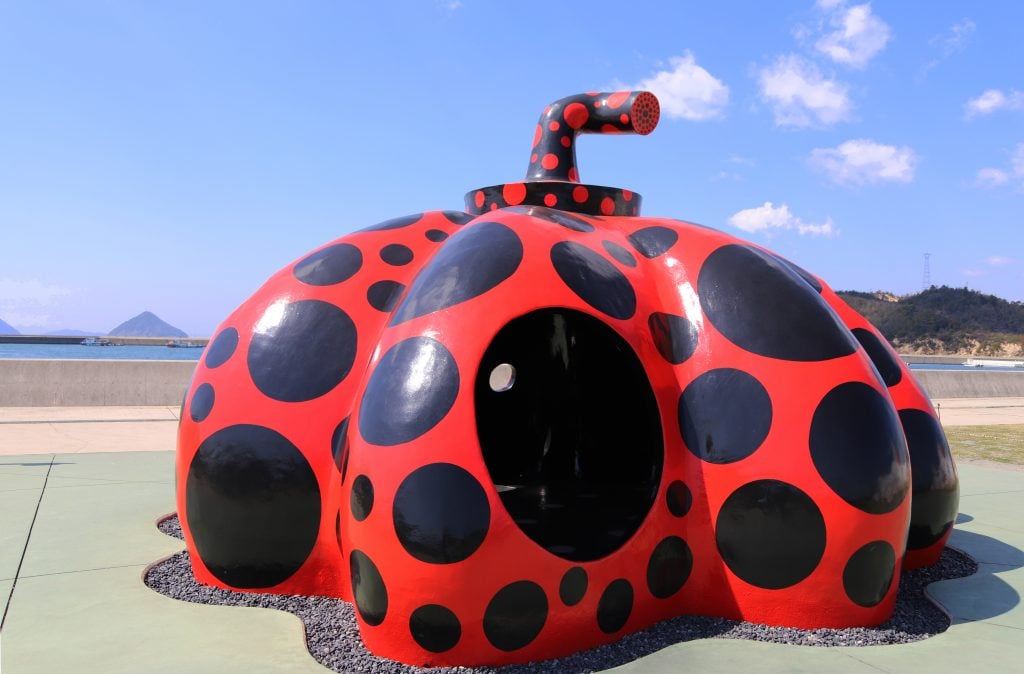
Yayoi Kusama’s outdoor work in Naoshima, Kagawa, Japan/ March 23th, 2020. Photo: Shutterstock
The red pumpkin is near Benesse Art House, a combination of museum and boutique hotel designed by Tadao Ando, featuring minimalist concrete structures that blend seamlessly with the surrounding landscape. This sculpture invites a different kind of interaction than just standing in front of it. You can actually step inside its polka-dot-filled interior and explore the playful, immersive space. Both pumpkins are massive Instagram moments. People line up forever to pose with them. It’s a bit ridiculous, standing in the sun just for a photo, but I did it anyway. You kind of have to.
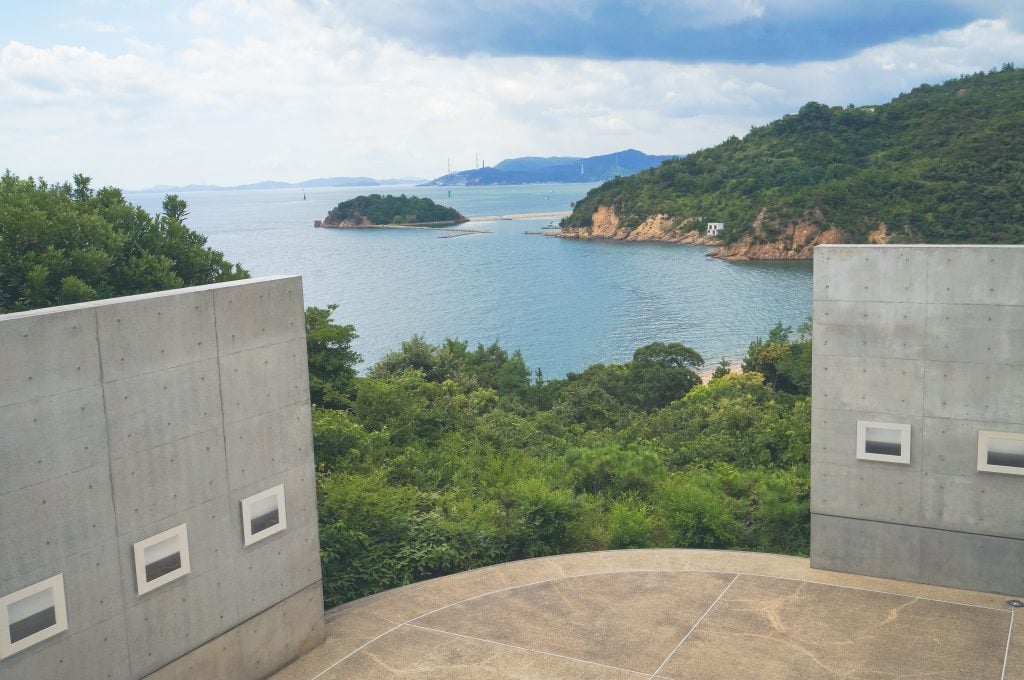
Naoshima, Japan: The outside of Benesse Art Museum on Naoshima island, Japan.
The permanent collection at Benesse House features works by contemporary art icons like Cy Twombly, Hiroshi Sugimoto, and Andy Warhol, including his Flowers and portraits of Jacqueline Kennedy. Both indoor galleries and outdoor installations emphasize the harmony between art, nature, and the serene landscapes of Naoshima.
Wrapping Up

Public art at Benesse art site on Naoshima island. (Photo by: Japan Stock Photo/Universal Images Group via Getty Images)
Naoshima and its neighboring islands are a mix of art paradise and logistical puzzle. It’s such a beautiful place, but be prepared for super regimented, timed experience. You need appointments for everything, and the timing is tight. You bike for 15 minutes, park, get your QR code scanned, and then you only have so much time inside. It’s not super relaxing, but it’s worth it. The art is minimal and timeless, not trendy or flashy. Even though it can feel like an amusement park with all the lines, the overall experience is unforgettable.
For those seeking a mix of cultural immersion, natural beauty, and timeless and sophisticated art, Naoshima offers an experience like no other. Just don’t forget to book ahead, wear comfortable shoes, and get ready for an art adventure.
Source Credit: Content and images from Artnet News. Read the original article - https://news.artnet.com/art-world/art-lovers-guide-to-naoshima-2585459

